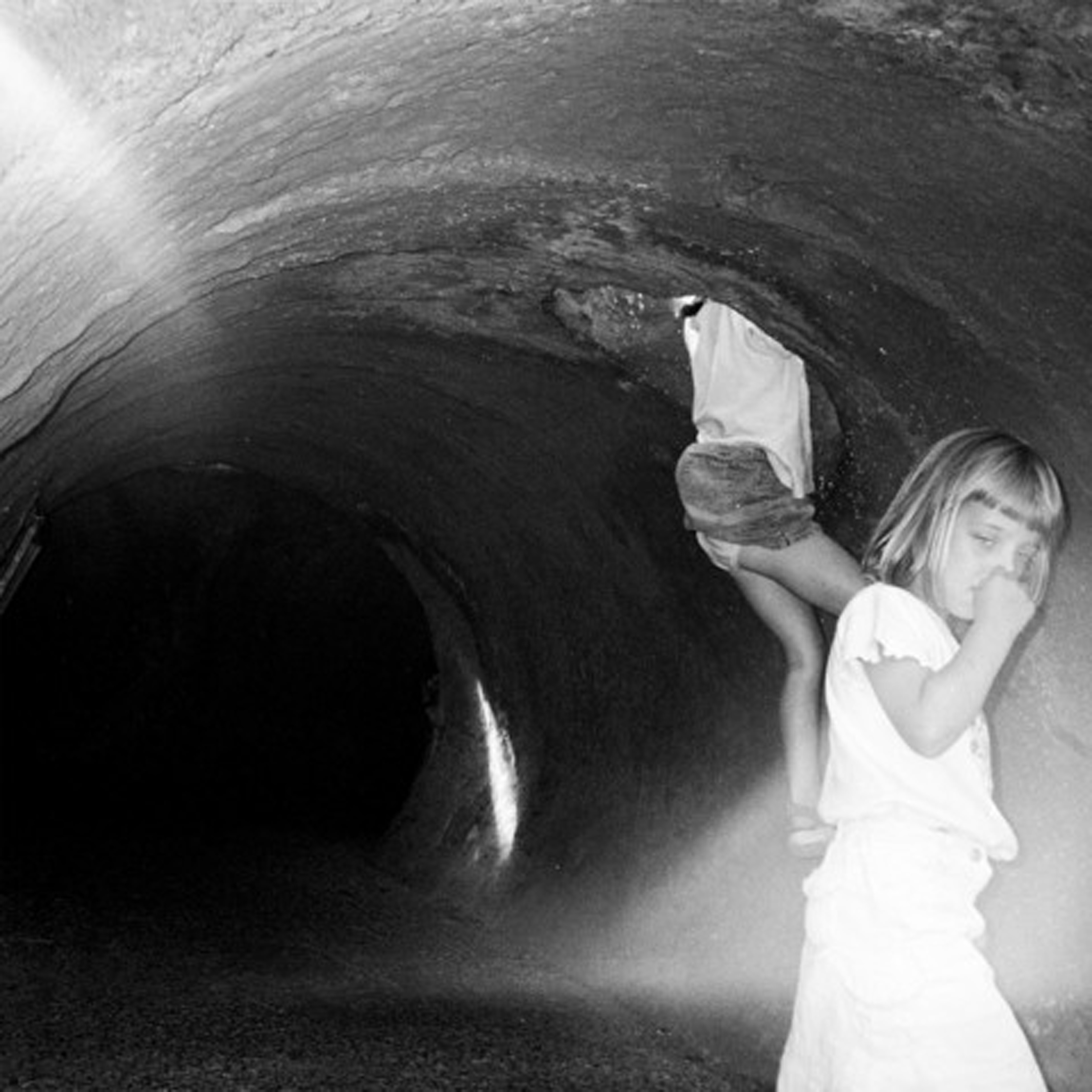 This is the debut album from the restlessly evolving Mark Van Hoen’s latest project, a duo with the Touch label's Mike Harding.  Recorded in LA during a particularly sweltering day, this single longform piece is quite divergent from any of Van Hoen’s previous work that I have heard, beautifully blending organ-like synthesizers with menacing throbs, crackling shortwave radio ambience, and mysterious field recordings.  Drøne are definitely onto something wonderful here, finding a niche that is simultaneously sublimely melodic, gently hallucinatory, and ominously unsettling.
This is the debut album from the restlessly evolving Mark Van Hoen’s latest project, a duo with the Touch label's Mike Harding.  Recorded in LA during a particularly sweltering day, this single longform piece is quite divergent from any of Van Hoen’s previous work that I have heard, beautifully blending organ-like synthesizers with menacing throbs, crackling shortwave radio ambience, and mysterious field recordings.  Drøne are definitely onto something wonderful here, finding a niche that is simultaneously sublimely melodic, gently hallucinatory, and ominously unsettling.
I normally spend very little time wondering where and when an album was recorded, but in the case of Reversing into the Future, the oppressively hot Los Angeles environment goes a long way towards explaining the resultant atmosphere of simmering dread and buzzing ominousness.  Divided into two halves of a single longform piece ("This Strange Life"), Future is a slow-burning fantasia that feels like half existential horror, half Blade Runner-style dystopia.  For much of the first half, Van Hoen’s modular synthesizers are little more than a murky, seismic force, as layers of out-of-sync throbs weave an impressive air of smoldering menace.  Eventually, however, they are fleshed out by some stuttering drones before unexpectedly blossoming into hauntingly elegiac chord progression.  Once everything is finally in place, the piece achieves a creepily beautiful Davis Lynch-esque grandeur, like I am drifting over LA at night in a helicopter fitted with especially loud and sinister-sounding blades.  Eventually, the chords fade away and the first half of the piece closes with a multilayered miasma of densely throbbing, buzzing, stammering, and twinkling synth patches.
The second half of "This Strange Life" slowly creeps back to life with a flurry of pinging, arrhythmic sonar-like tones and something that sounds like a blurry, relentlessly skipping fragment of a classical music record.  The piece soon takes a strange detour, however, dissolving its momentum into a thickly buzzing interlude populated with grinding washes and a hollow-sounding, "locked-groove" riff. That lull is the only time the album ever completely betrays its somewhat improvisatory origins, as the piece quickly regains its footing by downshifting to a threatening, quivering simmer.  "This Strange Life" then slowly begins to build back up to its second peak, as echoing, unintelligible voices gradually bleed in and everything plunges into gently burbling and surreal submerged ambiance.  The music does a lot of shapeshifting over the course of a few minutes, but the chattering, cryptic shortwave voices remain a constant, imbuing the piece with a disorienting air of mystery.  At times, the second half of "This Strange Life" even verges on noise, as Van Hoen unleashes distorted rumbles of sound and something that sounds like a distant fire alarm.  As it nears the end, however, the piece blossoms into unexpected beauty once more, as slow, heavy, and overloaded washes of bass are joined by a wandering, disjointed church organ motif and buried shouting.  It is glorious.
My sole quibble with Reversing into the Future is that it definitely feels rooted in improvisation and correspondingly has a few more lulls than would be ideal.  The flip side of that, however, is that there is also a more unpredictable and organically evolving arc than a meticulously edited composition might have yielded.  That said, the album’s greatest qualities lie in both its execution and its vision.  Reversing is remarkably richly textured and visceral, as Van Hoen proves to be a wizard at layering thickly pulsing drones for maximum gravitas and tension.  This is a surprisingly heavy and eerie album.  Also, even though the only "real" instrument is Van Hoen’s battery of synthesizers, Reversing into the Future does not sound at all like a "synthesizer album," which I hugely appreciate.  Admittedly, those synths do a lot of the heavy lifting, but many of the more memorable parts are either due to Harding’s shortwave radio transmissions or a more general collision of textures or juxtaposition of motifs.  The beauty of Reversing into the Future is that everything bleeds together so effectively and egolessly to evoke a sustained atmosphere of buzzing, throbbing disquietude.  I sincerely hope that Drøne is much more than a one-off collaboration, as Harding seems to be quite an excellent foil: this is easily my favorite Mark Van Hoen album since 2012's The Revenant Diary.
 
 
Read More

